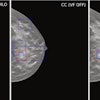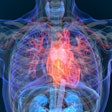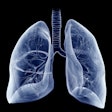
An unfortunate consequence of COVID-19 has been its devastating impact on medical imaging. Since the start of the pandemic, many imaging facilities have reported a substantial fall in non-COVID-related scans. More than 90% of imaging centers in the U.S. experienced a major decline in the volume of procedures not related to COVID-19, according to research conducted by IMV's Medical Information Division. It is reasonable to assume the story is similar in Europe and, while understandable, this drop will lead to delays in the diagnosis and treatment of many patients, endangering their health and risking lives.
The reduction in imaging is likely to be due to a resistance by patients concerned about being sent to a hospital during the pandemic, plus a redirection of resources to the treatment of COVID-19 patients. With no immediate end in sight to the current threat level, there is an urgent need for a metaphorical defibrillator to avoid a future healthcare crisis.
In the area of ultrasound, one potential jump-start is to perform analysis remotely using Software-as-a-Service (SaaS) to effectively deliver healthcare through the cloud. Unlike traditional software, analysis via the cloud is automated remotely to provide accurate results directly, while eliminating the need to click or touch software. If we think of the unassailable backlog of scans caused by COVID-19, leaving millions of patients globally undiagnosed with life-threatening cardiac conditions, the compelling need for rapid remote analysis allowing clinicians to do more scans in a day becomes clear.
Furthermore, fully automated ultrasound analysis means zero variability in the results delivered back to the patient, which will help build patient (and clinician) confidence that the diagnosis delivered back to the patient is reliable and accurate.
Need for automated solutions
With the use of ultrasound continuing to grow (certainly in cardiac care), the beauty is that patients can be imaged and diagnosed very quickly. The key is to use fully automated solutions that are interoperable and can eliminate processes such as full or part manual contouring (required by traditional and semiautomated methods) to deliver an almost instant analysis.
With a remote cloud service, there are no upfront equipment costs or training downtime. The entire diagnostic procedure can be completed in a matter of a few minutes, significantly reducing clinician workload and time spent with the patient. A pay-as-you-scan model spreads cost, and the additional benefits of standardization and reduced variability in measurements limit the expense and risk involved in reimaging or further testing.
Taking cardiology as an example, the risk of COVID-19 complications on the heart and for cardiovascular patients is well documented, and it is vitally important that imaging procedures continue but also essential that they happen in the safest possible way. Associations such as the American Society of Echocardiography and British Society of Echocardiography have been quick to release guidance, including advice on reducing scan times, reducing time spent handling and cleaning equipment, and limiting exposure of staff who are at increased risk of infection. This will require measurements and advanced analysis tools -- such as myocardial strain quantification -- to be moved off the cart.
Changing focus of AI
Until the pandemic, the argument for AI tools focused largely on supporting clinicians by helping improve diagnostic accuracy and giving them back time to spend with their patients. Now, with the need to make medical imaging as safe as possible, every second counts -- quite literally -- and full AI automation is arguably the only way to achieve this.
 Ross Upton, PhD.
Ross Upton, PhD.What is needed now is a willingness to embrace the enforced acceleration by COVID-19 of new ways of working. Traditionally, healthcare has adopted new technology at a similar pace to a supertanker -- slowly, with changes in direction involving a large "turning circle," and often after much deliberation. Over the past few months, that healthcare supertanker has been driven into the eye of the COVID-19 storm, and has admirably and rapidly discovered a new level of agility in responding to challenges presented around staffing, technology, and equipment needs, including when and how medical imaging procedures are ordered and performed.
The opportunity now is to embrace the potential offered by AI -- not only to ease the often-difficult logistics of healthcare delivery but also to significantly improve patient outcomes.
Ross Upton, PhD, is CEO of Ultromics, a U.K.-based med-tech company that applies AI to analyzing echocardiograms to improve diagnostic accuracy and optimize treatment processes in cardiac analysis.
The comments and observations expressed herein do not necessarily reflect the opinions of AuntMinnieEurope.com, nor should they be construed as an endorsement or admonishment of any particular vendor, analyst, industry consultant, or consulting group.



















